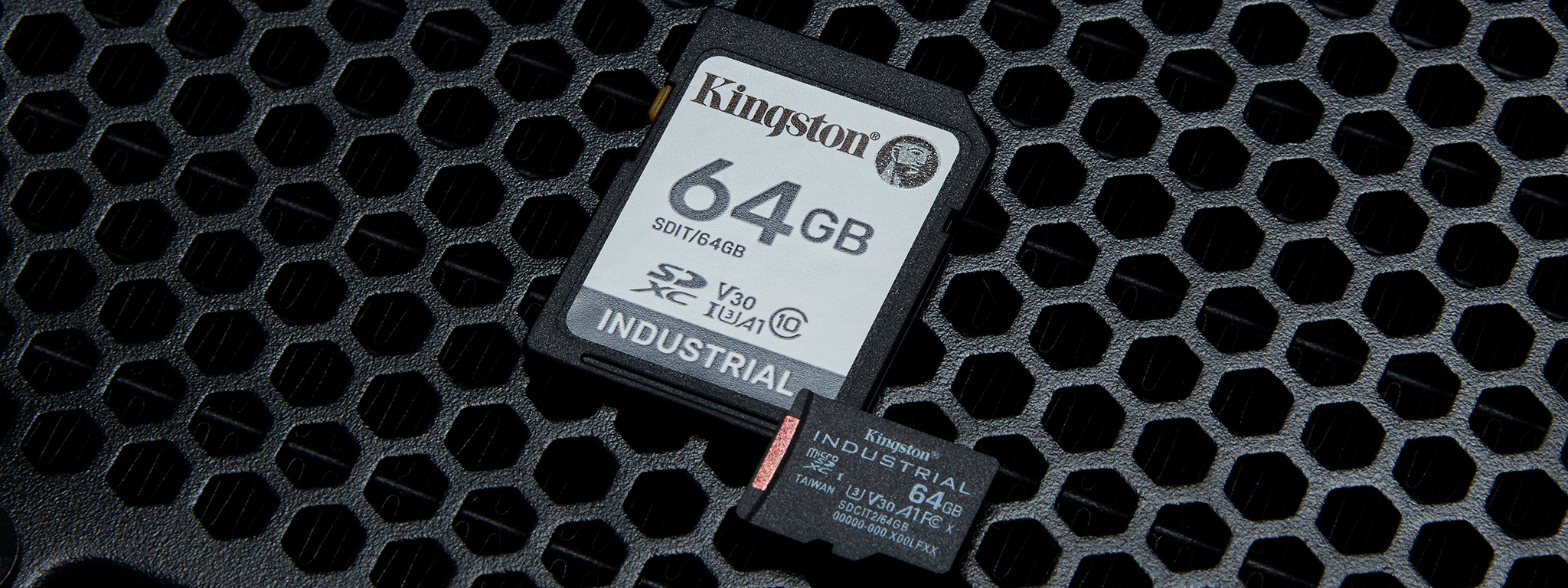
Get to know the features of the Kingston Industrial cards
-
Bad Block Management
Bad blocks contain one or more bits that have lost reliability. The bad blocks appear during the manufacturing process (Early Bad Blocks) or throughout the lifetime of the card (Later Bad Blocks). Both types of bad blocks are inevitable, making Bad Block Management a necessity to manage errors in NAND flash devices. Bad Block Management will identify and flag bad blocks, it will then use the free extra capacity to replace the invalid blocks. It will stop data from writing to the bad blocks which strengthens the reliability of the product. If the bad block has data, it will move the data to a valid block to prevent data loss.
-
ECC Engine
NAND flash memory must maintain data integrity as data moves from the host PC to the NAND storage via the flash controller. The data transfers from the host to the card are often referred to as “data in flight” or “data in transit” before they are actually written to the NAND flash storage. Flash controllers incorporate Error Correction technology (called ECC, which stands for Error Correction Code) to detect and correct most errors that can affect data along this trajectory. Flash memory chips incorporate additional error correction information along with every block of data that is written. This information allows the flash controller to simultaneously correct errors when reading a data block. NAND flash memory, like hard disk drives, will encounter bit errors during normal operation that it will correct on the fly with its ECC data. If a NAND device has excessive errors in a data block, then that block will be marked as a Bad Block, retired, then replaced with one of the spare blocks rotated into service. During this process, the data will be corrected if needed using ECC. The use of Spare Blocks extends the useful life and endurance of SSDs.
-
Power Failure Protection
Power loss is unavoidable and can cause havoc in a work environment if the proper hardware is not being used. Power Failure Protection is necessary to prevent data loss. A supported host device can send a command to the card that will halt any of its operations if it detects any drop in power. This allows the card time to save any data currently being written at the time of power loss.
-
Auto-Refresh Read Distribution Protection
The auto-refresh function reads the data on the flash memory, including those where data are rarely read out, and performs automatic error correction as required to prevent data losses caused by read disturb errors, data holding errors and other errors. The auto-refresh function is performed in the background so that it causes little delay in the response to commands even during the correction process.
-
Dynamic Data Refresh
Dynamic Data Refresh is employed to make sure that during read only operations, blocks with a high number of errors can be removed and refreshed for the next use. During each read command, the controller will perform a three stage check on the target block:
- First stage is to check for a “need to refresh” mark
- Second stage is to check for the number of error bits currently present
- Third stage is to check retry for the number of retry counts currently present
-
Garbage Collection
Garbage Collection is key for NAND flash to remain durable and maintain its speed. NAND flash-based devices cannot overwrite data that is already there. They must go through a Program/Erase cycle to write to an already used block of data. A NAND flash controller would first copy all valid data (that is still in use) and write it to empty pages of a different block. It will then erase all the cells in the current block (both valid and invalid data), to then start writing new data to the newly erased block. This process is called Garbage Collection
-
Wear Leveling
Kingston flash storage devices incorporate controllers utilizing advanced wear leveling technology which distributes the number of P/E cycles (program/erase) across the flash memory evenly around all blocks. When a block is needed to store data, the empty block with the lowest erase count is used. Wear-leveling thus extends the useful life of a flash memory card.
Kingston’s Industrial grade cards are specifically designed to meet the endurance, performance, and environmental requirements across a wide range of industrial applications for the longevity of the product. They are available in 8GB-64GB capacities and are backed by a three-year warranty, free technical support and legendary Kingston reliability.
#KingstonIsWithYou
Was this helpful?
Related Products
- Name — Z to A
- Name — A to Z
No products were found matching your selection
Related Articles
-

Choosing Storage for Your Android Device
First, look for Class A1 or Class A2 markings. As for capacity, microSD cards can hold up to 512GB of storage.
-

Understanding the Naming Conventions and Labels of SD and microSD Cards
How can a SD or microSD card be rated at both C10 and U3 if one means 10MB/s and the other means 30MB/s? Let us explain.
-

Difference between SLC, MLC, TLC and 3D NAND in USB flash drives, SSDs and memory cards
Are there endurance vs cost benefits between the different types of NAND?
-
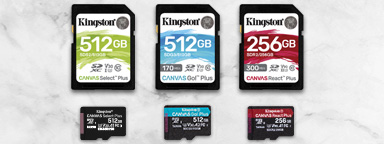
A Guide to Speed Classes for SD and microSD Cards
What does Speed Class C10 mean? What is a UHS Class and V Class? It relates directly to how fast the device needs to write the data.
-

A Guide to SD and microSD Card Types
What is SDHC, SDXC, SDUC and microSD, microSDHC, microSDXC, and microSDUC? What should I use for each type of device? We will guide you on selecting the right card for your gear.
-
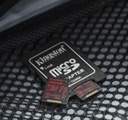
Flash Memory Storage Chart
A chart which shows how many images, videos and files you can store on SSD drives, USB flash drives and memory flash cards.
-

Choosing the Right Memory Card for Your Security Camera
When selecting storage for your security camera, you must consider the memory card’s capacity, speed, and durability.
-

What Businesses Need in their Work-from-Home Enablement
What we learned from Kingston’s experts and tech influencers on work-from-home enablement Twitter chat.
-
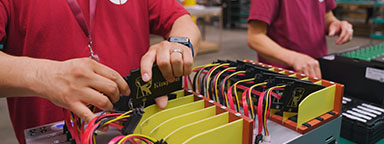
Rugged Computing with Kingston and Premio
Premio Inc makes rugged computing solutions for industrial use, partnered with Kingston.
-

Kingston and Signpost Deliver Products at Speed with a Customer-First Mindset
Learn why Signpost chose Kingston SSD and memory to support their education solutions.
-
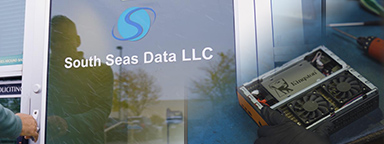
How a Tech Services Provider Built a Reputation for Reliability with Kingston Memory and SSDs
South Seas Data earned its success as a tech services provider with reliable parts from Kingston.
-
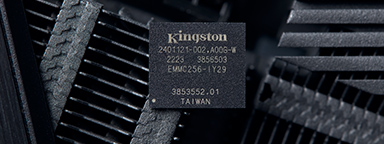
eMMC Life-Cycle Estimating, Validating & Monitoring
eMMC storage has a functional lifetime that is constrained by flash endurance. Proper consideration and estimation of the storage device lifecycle are critical.
-

SSDs: The Changing Face of Data Storage eBook
In this eBook, we speak with experts about the journey of data storage, and what the future holds.
-

SSDs for Purpose-Built Computers: Industrial SSDs
Industrial SSD are for industrial system builders. The SSDs go through qualification process so they can be added to system BOM.
-

How Kingston Is Powering WolfVision’s Hybrid World of In-Person and Virtual Meetings
Kingston powers WolfVision’s products to bring hybrid meetings to companies and organizations.
-

Digital Transformation: Sustaining Success in a New Business Era
Read our eBook, about the rise of digital transformation and what the future holds.
-

Beyond Smart Cities: How IoT is Changing the World
In this eBook, we speak with experts about IoT’s journey and prepare organizations for IoT’s future.
Please sign me up for emails from Kingston about its products, services and news.
Kingston Technology Company, Inc.
Kingston Digital, Inc.
We’ll handle your information in line with our privacy policy.
To ‘unsubscribe’ click the link at the bottom of our emails.

